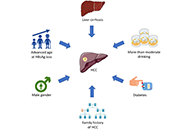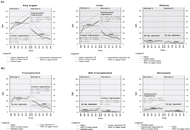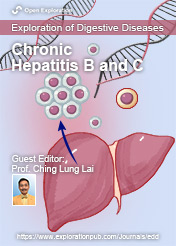-
Guest Editor
Prof. Ching Lung Lai E-Mail
The University of Hong Kong, State Key Laboratory of Liver Research, Hong Kong, China
About the Special Issue
The World Health Organization (WHO) has set the target for the global elimination of viral hepatitis since 2016. It aims to reduce new infections and death due to viral hepatitis by 30% and 10% respectively in 2020, and 90% and 65% respectively in 2030.
However of the four top infectious diseases in the world, including malaria, tuberculosis, human immunodeficiency virus (HIV) and viral hepatitis, WHO reports that the incidence of mortality in the first 3 diseases are dropping but the mortality due to viral hepatitis is rising. Despite the wide spread use of neonatal vaccination against the hepatitis B virus (HBV) including in countries of the Third World, WHO reported in 2019 that there were 296 million people with chronic HBV, with 1.5 million new infections per year. The problem is even more serious with the hepatitis C virus (HCV) since there is no vaccine to prevent the infection. The incidence of HCV mainly depends on the people who injects drugs (PWID) using needles which have been used by others. Both HBV and HCV can lead to cirrhosis and hepatocellular carcinoma (HCC). Antiviral treatment for both HBV and HCV can reverse, to a certain degree, the severity of cirrhosis and the development of HCC. Whereas HCV, being a RNA virus, requires only an 8-12 week course of antiviral treatment to induce sustained virologic response, HBV, being a DNA virus, still requires life-long treatment. With HBV infection, if the patients manage to lose the hepatitis B surface antigen (HBsAg seroclearance) there is a reduction in the development of HCC. HBsAg seroclearance is now termed as “functional cure” for HBV and newer agents are being studied to increase the proportion of patients with HBsAg seroclearnace.
To complicate matters, there is a rising incidence of steatotic liver disease (STD, formerly known as non-alcoholic steatohepatitis) globally. STD can also cause cirrhosis and HCC. The effect of co-existence of STD with HBV or HCV is still not clearly defined.
The aim of the present issue is to clarify some of the issues raised in this Introduction.
Keywords: chronic hepatitis B, chronic hepatitis C, cirrhosis, hepatocellular carcinoma, HBsAg seroclearance
Call for Papers
Published Articles
 Hepatocellular carcinoma surveillance after HBsAg seroclearanceOpen AccessReviewHepatitis B surface antigen (HBsAg) seroclearance is considered the functional cure and the optimal treatment endpoint for chronic hepatitis B (CHB). Patients with CHB who cleared HBsAg generally ha [...] Read more.Jimmy Che-To Lai ... Terry Cheuk-Fung YipPublished: May 11, 2024 Explor Dig Dis. 2024;3:175–189
Hepatocellular carcinoma surveillance after HBsAg seroclearanceOpen AccessReviewHepatitis B surface antigen (HBsAg) seroclearance is considered the functional cure and the optimal treatment endpoint for chronic hepatitis B (CHB). Patients with CHB who cleared HBsAg generally ha [...] Read more.Jimmy Che-To Lai ... Terry Cheuk-Fung YipPublished: May 11, 2024 Explor Dig Dis. 2024;3:175–189
DOI: https://doi.org/10.37349/edd.2024.00046 Impact of the direct acting antivirals on chronic hepatitis C prevalence on the Swiss organ transplantation list: a retrospective analysisOpen AccessOriginal ArticleAim: In Switzerland, the first access to interferon-free direct-acting antivirals (DAAs) for hepatitis C virus (HCV) treatment was in 2014. This study aimed to analyze the effects of DAAs on the [...] Read more.Luis Falcato ... Franz ImmerPublished: December 25, 2023 Explor Dig Dis. 2023;2:297–304
Impact of the direct acting antivirals on chronic hepatitis C prevalence on the Swiss organ transplantation list: a retrospective analysisOpen AccessOriginal ArticleAim: In Switzerland, the first access to interferon-free direct-acting antivirals (DAAs) for hepatitis C virus (HCV) treatment was in 2014. This study aimed to analyze the effects of DAAs on the [...] Read more.Luis Falcato ... Franz ImmerPublished: December 25, 2023 Explor Dig Dis. 2023;2:297–304
DOI: https://doi.org/10.37349/edd.2023.00032 -
-
Ongoing Special Issues
-
Completed Special Issues
